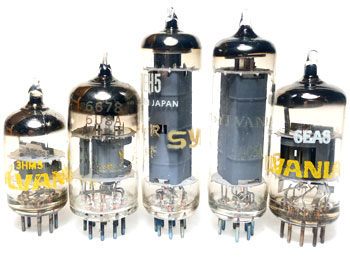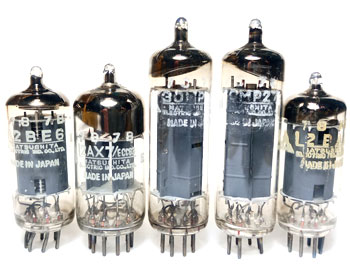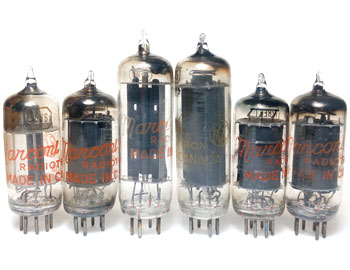What are Electronic Tubes?
Electronic tubes, also known as vacuum tubes or valve tubes, are electrical components that were widely used in electronic devices before the invention of the transistor. These tubes are made of glass or metal and contain a vacuum, hence the name vacuum tubes.
So, what exactly are electronic tubes? At their core, electronic tubes are devices that control the flow of electrons in a circuit. They consist of an anode (or plate), a cathode, and a control grid. The cathode emits electrons when heated, and the control grid determines the flow of electrons from the cathode to the anode.
Electronic tubes were instrumental in the early days of electronics, allowing for amplification, signal modulation, and detection. They were used in radios, televisions, computers, and various other devices. Their ability to amplify electrical signals paved the way for the development of modern electronic technology.
While electronic tubes have been largely replaced by transistors and integrated circuits, their historical significance cannot be overlooked. These tubes played a vital role in shaping the way we use technology today and continue to be appreciated by enthusiasts for their nostalgic charm.
Diodes and Vacuum Tubes
Before the emergence of more complex electronic tubes, such as triodes and pentodes, there were diodes and vacuum tubes. Diodes were one of the earliest forms of electronic tubes and were crucial in rectifying alternating current (AC) to direct current (DC). They allowed current to flow in only one direction, effectively converting AC signals into DC signals.
Vacuum tubes, on the other hand, expanded upon the concept of diodes by introducing additional functionality. They consisted of two or more electrodes placed within a vacuum-sealed glass or metal tube. These electrodes included the anode (or plate), cathode, and control grid, which allowed for more precise control over the flow of electrons.
Vacuum tubes played a crucial role in the development of electronic technology. They were used in amplifiers, radios, and early computers, and were responsible for the first long-distance telephone calls and the first televisions. Their ability to control electron flow and amplify signals laid the foundation for future advancements in electronics.
However, vacuum tubes had several limitations. They were large, fragile, and required high voltages to operate, making them inefficient and impractical for many applications. The search for smaller, more efficient alternatives led to the development of triodes and pentodes, which we will explore in the next section.
Triodes and Pentodes
As electronic technology continued to advance, engineers sought to address the limitations of vacuum tubes, leading to the development of triodes and pentodes.
Triodes were a major breakthrough in electronic tube technology, introducing a third electrode called the control grid. This allowed for even greater control over the flow of electrons. Triodes were used in audio amplifiers, oscillators, and early computers, revolutionizing the world of electronics.
Pentodes, an extension of the triode concept, added two additional electrodes - the screen grid and suppressor grid. These additional electrodes provided better control over electron flow, reduced distortion, and increased efficiency. Pentodes were widely used in audio amplifiers, televisions, and radios.
The development of triodes and pentodes marked a significant milestone in electronic tube technology, as their improved performance and versatility made them the go-to choice for many applications. However, their large size and power consumption remained a challenge, driving engineers to explore alternative technologies.
In the next section, we will explore the rise of cathode-ray tubes and their impact on electronic tube technology. Stay tuned!
The Rise of Cathode-Ray Tubes
With the advancements in electronic tube technology, the rise of cathode-ray tubes (CRTs) took the industry by storm. CRTs revolutionized the world of electronics, especially in the field of displays.
CRTs functioned by using an electron gun to emit a stream of electrons towards a phosphor-coated screen. The electron beam would scan across the screen, illuminating different phosphor dots and creating the images we see. This allowed for the creation of dynamic and high-resolution displays, paving the way for the first television sets.
CRTs became widely used in televisions, computer monitors, and oscilloscopes, and played a significant role in the growth of the entertainment and technology industries. Their ability to display vivid colors and produce high-quality images made them a staple in households worldwide.
However, the limitations of CRTs eventually led to their decline. They were bulky, required a lot of power, and were susceptible to screen burn-in. As technology advanced, flat-panel displays like LCDs and LEDs became more practical and affordable, ultimately replacing CRTs in the market.
Despite their decline, CRTs remain an important part of the history of electronic tubes, showcasing the significant impact they had on shaping the technology we enjoy today.
Nixie Tubes - The Peak of Electronic Tube Innovation
Nixie tubes represent the peak of electronic tube innovation, captivating both engineers and enthusiasts alike with their mesmerizing display capabilities. Developed in the mid-20th century, Nixie tubes were unlike any other electronic tube at the time, boasting a unique numerical or alphanumeric display that emitted a soft, warm glow. These tubes were used primarily as digital readouts, providing a visually striking way to display numbers and letters.
What made Nixie tubes truly remarkable was their ability to individually illuminate each digit or character, resulting in a clear and easily readable display. This was achieved by incorporating a wire-mesh anode and multiple cathodes, each shaped like the desired digit or character. When an electrical current was applied to the corresponding cathode, it would light up and create a beautiful glowing display.
Although Nixie tubes eventually became obsolete with the advent of LED and LCD displays, their retro aesthetic and vintage charm continue to captivate modern-day enthusiasts. Today, Nixie tubes are highly sought after by collectors and are often repurposed in various art projects and DIY electronics. They serve as a nostalgic reminder of the golden age of electronic tubes and the innovative spirit that drove their development.
The Fall of Electronic Tubes
As technology continued to advance, the limitations of electronic tubes became more apparent, leading to their eventual decline. The main factors contributing to the fall of electronic tubes were their size, power consumption, and the emergence of more efficient alternatives.
Electronic tubes, with their large, bulky designs, were simply not practical for many applications. They took up valuable space in electronic devices and required high voltages to operate, making them inefficient and costly. As technology progressed, engineers began to explore smaller and more compact options.
The development of transistors and integrated circuits revolutionized the electronics industry. These solid-state components offered numerous advantages over electronic tubes, including smaller sizes, lower power consumption, and improved reliability. They quickly replaced electronic tubes in most applications, becoming the foundation of modern electronic technology.
Although electronic tubes have largely been phased out, their historical significance remains undeniable. They played a crucial role in the early days of electronics, paving the way for advancements that have shaped our world today. While we may no longer see electronic tubes in our everyday devices, they will always be remembered for their contributions to the evolution of technology.



